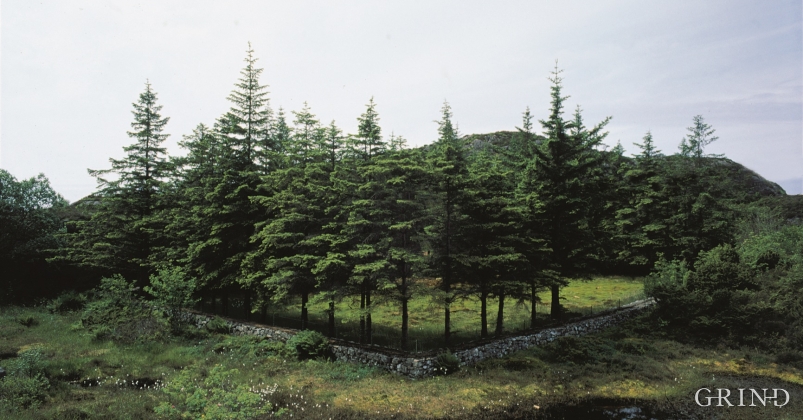Published: 12.02.2013 | Author: Nils Georg Brekke, Tore Lande Moe
The cholera graveyards in Hordaland most often lie in outlying areas, as here at Møvik. At the top of Bildøybakken there is a corresponding graveyard, surrounded by a stone fence and large pine trees.(Svein Nord).
In the winter of 1849 the impoverished Fjell municipality was forced to put money into new burial places at Møvik and Bildøydalen, because of the raging cholera epidemic. On 28 March the municipal council decided on a resolution “to apply to His Majesty the King most subserviently to be granted a loan of 500 Speciedaler …”
The serious infectious diseases, and especially cholera, became a scourge of the 19th century. Cholera originated in India and first showed up in Europe in 1817. The second large epidemic came in 1832. In 1848 the third one occurred, this time with a boat from England. The epidemic raged from Gulen in Sognefjorden to Egersund. From Bergen the disease spread to the communities around. It also touched Espevær on Bømlo, in the middle of the herring fisheries in 1849, and from there it spread further afield with the fishermen.
The preventative measures against cholera were primarily to find suitable areas for burial. There are very few cholera graveyards in the country outside Hordaland.





